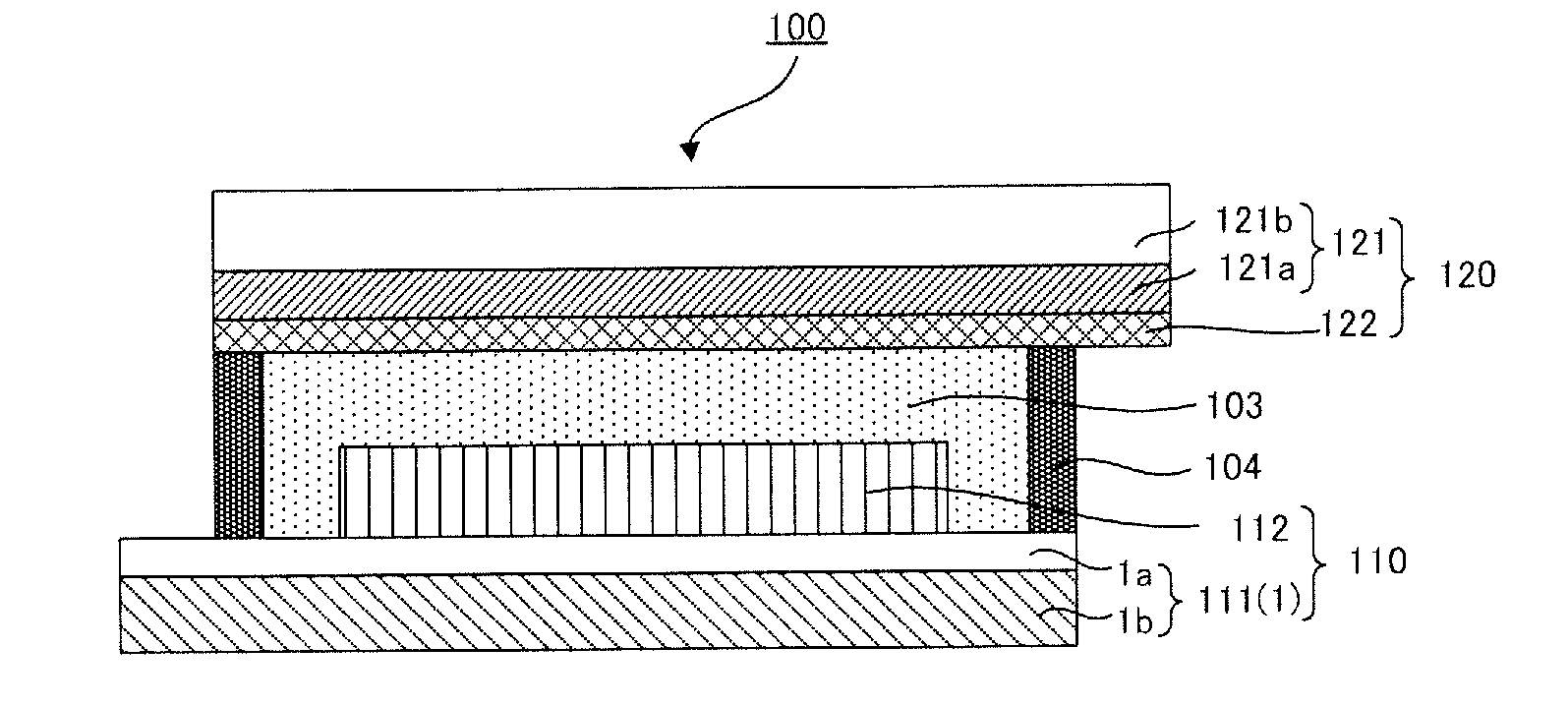Dye-sensitized solar cell
- Summary
- Abstract
- Description
- Claims
- Application Information
AI Technical Summary
Benefits of technology
Problems solved by technology
Method used
Image
Examples
example 1
[0232]A 50 μm-thick stainless steel base material (SUS304, specific resistance: 0.7×10−6 Ω·m) was prepared as a first metal layer, and a conductive base material for dye-sensitized solar cell was obtained by forming a 15 nm-thick Cr layer as a second metal layer on the stainless steel base material by vacuum vapor deposition.
[0233]An ink was prepared by dispersing TiO2 fine particles (P25™ manufactured by Nippon Aerosil Co., Ltd.) in ethanol, and a coating liquid for forming a porous layer was obtained by adding polyvinyl pyrrolidone (K-90™ manufactured by Nippon Shokubai Co., Ltd.) to the ink to achieve a solid content of 5%. Then, the coating liquid for forming a porous layer was applied with a doctor blade on an area of 10 mm×10 mm on the Cr layer of the conductive base material for dye-sensitized solar cell used as a first electrode base material and was then dried at 120° C. to obtain a 7 μm-thick layer for forming a porous layer. Then, a pressure of 0.1 t / cm was applied onto t...
example 2
[0238]A dye-sensitized solar cell was produced in the same manner as in Example 1 except that the second metal layer was changed to a 50 nm-thick Cr layer.
example 3
[0239]A dye-sensitized solar cell was produced in the same manner as in Example 1 except that the second metal layer was changed to a 15 nm-thick Ti layer.
PUM
| Property | Measurement | Unit |
|---|---|---|
| Nanoscale particle size | aaaaa | aaaaa |
| Electrical resistivity | aaaaa | aaaaa |
| Electrical resistivity | aaaaa | aaaaa |
Abstract
Description
Claims
Application Information
 Login to View More
Login to View More - R&D
- Intellectual Property
- Life Sciences
- Materials
- Tech Scout
- Unparalleled Data Quality
- Higher Quality Content
- 60% Fewer Hallucinations
Browse by: Latest US Patents, China's latest patents, Technical Efficacy Thesaurus, Application Domain, Technology Topic, Popular Technical Reports.
© 2025 PatSnap. All rights reserved.Legal|Privacy policy|Modern Slavery Act Transparency Statement|Sitemap|About US| Contact US: help@patsnap.com



